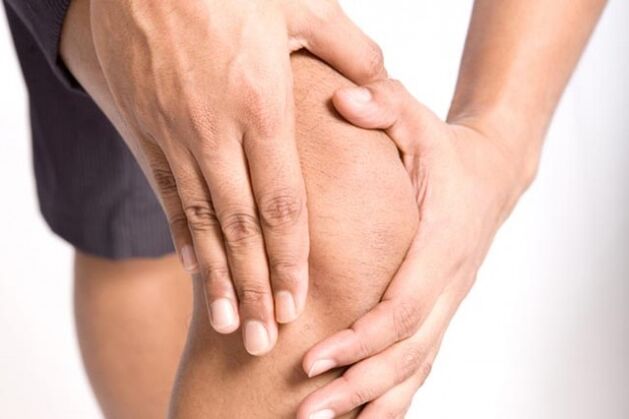Osteoarthritis of the knee joint (gonarthrosis) is a degenerative disease characterized by progressive wear and tear of the cartilaginous layer of the knee joint.
Causes of knee osteoarthritis
It appears most often in people over 50 years old.Excess weight worsens the symptoms of the disease, while losing weight reduces its manifestation.There is also a genetic predisposition, that is, in some families osteoarthritis occurs more often than in others.Exacerbating factors include previous injuries to the knee, menisci, and ligaments.
Symptoms of knee osteoarthritis

The symptoms of knee osteoarthritis always progress over time.Patients often notice an exacerbation of the disease in the autumn-spring periods;pain can also depend on weather changes.
- Pain at rest, diminishing slightly when walking;
- Limitation of range of motion in the joint;
- Stiffness in movements;
- Increased sensitivity in the joint area;
- Swelling of the soft tissues around the joint;
- Joint deformation.
The condition of the joint is assessed by examination and x-rays.With the help of x-rays, the stage of the disease is determined and appropriate treatment is prescribed.
Treatment of knee osteoarthritis
Treatment of gonarthrosis begins with the simplest stages and moves to more complex stages, and is adjusted depending on the effectiveness of certain methods.
Weight loss
The less weight, the less overload the knee joints are and, accordingly, the fewer symptoms of the disease appear.
Change of activity
Certain types of physical activities associated with joint overload must be limited (running, weightlifting, etc.).While physical exercises that do not overload the joint increase the range of motion, reduce pain and slow the progression of the disease (swimming, skiing, orbitrek, etc.).
Additional support
In case of significant pain, crutches or canes are used to unload the joint.
Physiotherapy
Strengthening the muscles around the knee joint helps reduce overload on the joint and prevent muscle wasting (atrophy), which is important in maintaining knee function.
Orthopedic insoles (insoles)
With the help of orthopedic supports for the instep, the biomechanics of walking are corrected, the correct distribution of weight on the knee joint is achieved, and the manifestations of the disease are reduced.
Anti-inflammatory drugs
To treat the inflammation and pain caused by the disease, nonsteroidal anti-inflammatory drugs (Diclofenac sodium, etc.) are used.
Hormonal injections into the joint
Injections of hormonal medications (cortisone) effectively help reduce pain and inflammation in the joint.However, you should be extremely careful when using these medications, because... the likelihood of side effects from such therapy often outweighs the possible good results.
Biological therapy.
The most modern and effective methods of biological therapy for the conservative treatment of articular osteoarthritis.These include PRP therapy, cytokine therapy and MSK therapy.
PRPis a serum rich in platelets and growth factors extracted from blood that accelerates the healing process of acute and chronic injuries.Growth factors are chemicals that trigger the healing process.The introduction of PRP into the injured area stimulates the regeneration process, accelerates healing and promotes rapid resolution of the inflammatory process.
Cytokine therapyis a safe and effective treatment for osteoarthritis, in which a therapeutically active protein, IL-1Ra, produced by the body, fights chronic progressive degeneration of cartilage.Interleukin-1 (IL-1), a substance that enhances the inflammatory process in the joints and leads to their premature wear, plays a key role in the development of joint osteoarthritis.Its biological antipode is the interleukin-1 receptor antagonist (IL-1Ra), which reduces inflammation, increases mobility and reduces pain.
MSK therapy- Stem cell treatment is considered an innovative and advanced therapeutic method, based on their key characteristic - undifferentiation (not belonging to any specific tissue) and, therefore, they have the ability to multiply and develop into specialized cells of various tissues.
Joint fluid substitutes.
Injections of hyaluronic acid preparations are very effective and, with minimal side effects, help for a long time (up to 1 year) to significantly reduce symptoms and slow down the progression of the disease.
Chondroprotectors
Glucosamine and chondroitin are safe and effective medications that are often used to treat osteoarthritis of the knee joint.
Denervation of the knee joint is an effective and safe method of treating pain associated with osteoarthritis of the knee joint.
Genicular nerve denervation
In cases where conservative treatment does not bring relief and arthroplasty is not possible due to certain contraindications, denervation of the genicular nerves can be used.The essence of the procedure is heat treatment of the sensitive nerves of the knee joint, which transmit pain impulses.After a successful outpatient procedure, a significant long-term reduction in pain in the knee joint is possible.
Arthroscopic debridement of the knee joint
The effectiveness of arthroscopic intervention in osteoarthritis of the knee joint remains controversial, but it is quite effective in relieving some specific symptoms.
Osteotomy
Surgical intervention to realign the axis of the lower limb.Effective in young people with minimal damage to the cartilaginous layer of the joint.
Total endoprostheses
Complete replacement of the articular surfaces of the knee joint with metal implants is the only effective treatment for end-stage gonarthrosis.
Partial knee replacement
The so-called unicondylar knee arthroplasty, in which the site of the articular cartilage defect is replaced by a metal plate.The indications for this procedure are very limited.





































